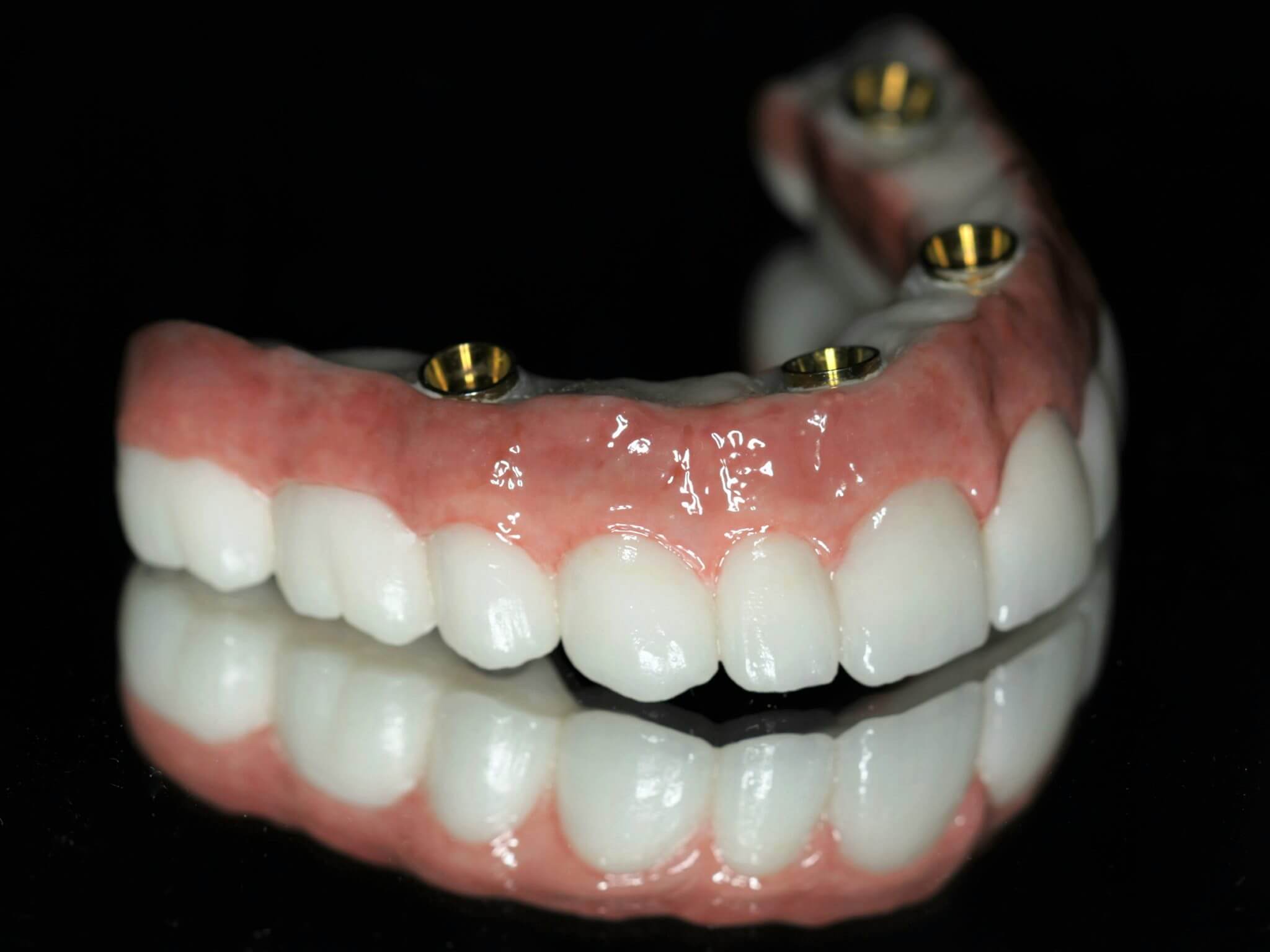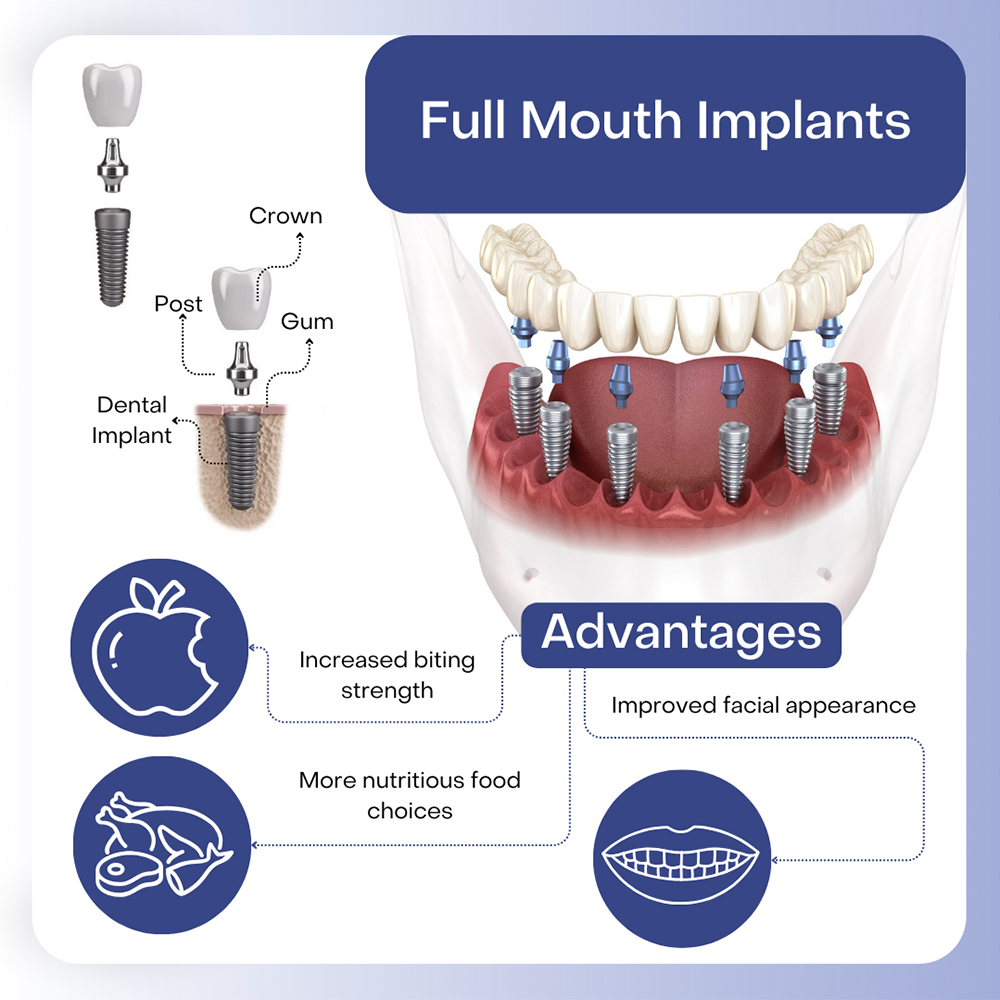Unknown Facts About Dental Sense
Wiki Article
Little Known Facts About Dental Sense.
Table of ContentsDental Sense Fundamentals ExplainedThe Facts About Dental Sense UncoveredLittle Known Facts About Dental Sense.Examine This Report about Dental Sense
are medical tools operatively implanted into the jaw to recover an individual's ability to eat or their look. They supply support for artificial (phony) teeth, such as crowns, bridges, or dentures. When a tooth is lost due to injury or illness, a person can experience complications such as rapid bone loss, malfunctioning speech, or adjustments to eating patterns that result in pain.Dental implant systems are composed of a dental implant body and oral implant abutment and might additionally include a joint fixation screw. Kids dental. The oral implant body is surgically put in the jawbone instead of the tooth's root. The oral implant abutment is generally connected to the implant body by the abutment addiction screw and extends through gum tissues right into the mouth to sustain the connected synthetic teeth
(https://dental-sense.jimdosite.com/)Structure of The Oral Implant System picking dental implants, speak with your oral supplier about the potential advantages and threats, and whether you are a prospect for the treatment. Things to consider: Your total health is a crucial aspect in figuring out whether you are a great prospect for dental implants, how long it will require to heal, and how much time the dental implant may remain in place.
Smoking cigarettes may affect the recovery process and reduce the long-term success of the implant. The recovery process for the implant body may take a number of months or longer, during which time you commonly have a temporary abutment in location of the tooth. the oral implant procedure: Carefully follow the oral hygiene instructions provided to you by your oral copyright.
Dental Sense Things To Know Before You Get This
Implant failing can result in the requirement for another procedure to repair or change the dental implant system. Recovers the ability to eat Recovers cosmetic appearance Assists keep the jawbone from shrinking due to bone loss Protects the wellness of the bordering bone and gums Aids maintain adjacent (close-by) teeth steady Enhances lifestyle Damage to bordering natural teeth during implant placement Injury to the surrounding tissues during surgical procedure, such as sinus perforation Injury throughout surgical procedure (for instance, crack of surrounding jawbone) Inadequate function, such as feeling like the teeth do not attack with each other typically A sensation that the tooth hangs or twisting in position resulting from a joint screw loosening Implant body failing (looseness of the dental implant body) as a result of systemic infection, which may be more probable in clients with unrestrained diabetes mellitus due to local infection in bone and gum tissues sustaining the implant body due to postponed recovery, which may be much more likely in clients who smoke Trouble cleaning the gum tissues around the implant, resulting in inadequate dental hygiene Neglected periodontal illness Post-surgical pins and needles as a result of nerve impingement or damage Constantly alert health and wellness care providers and imaging professionals that you have oral implants before any magnetic resonance imaging (MRI) or x-ray procedures.FDA is not familiar with any kind of negative events reported for MRI or x-ray treatments with oral implants. Dental implants systems are typically constructed from materials that follow international agreement standards of the International Organization for Standardization (ISO) or ASTM International. These criteria have details of what makes a safe product.

An oral implant is a framework that changes a missing out on tooth. With screw-like gadgets, the specialist inserts an implant right into the jawbone, and it functions as an anchor for a synthetic tooth, called a crown. A gadget called a joint attaches the synthetic tooth to the dental implant. The crown is customized to fit the individual's mouth and match the color of their teeth.
The Only Guide to Dental Sense
Some people are not eligible for oral implant surgical procedure. It is for dental doctors to operate individuals with: intense illnessuncontrollable metabolic diseasebone or soft tissue disease or infectionIf these issues are settled, an individual can have the surgery. In, dental surgeons avoid from running on people with: If people with any of the above undergo oral implant surgical procedure, there is a greater threat of the dental Find Out More implant stopping working.
Oral implant surgical procedure is a personalized procedure. It's not the exact same for everybody. The adhering to offers a basic introduction of what you can expect your dentist, oral cosmetic surgeon, periodontist or prosthodontist to do: Put the implant surgically. Provide you time to recover. Connect the message and last crown, bridge or denture.
Next, your cosmetic surgeon will thoroughly place the dental implant right into your jaw. If your implant is near the front of your mouth, your dental practitioner will certainly make a short-lived tooth for you to put on till you heal.
The Basic Principles Of Dental Sense
Your company can tell you what to anticipate in your circumstance. Throughout the healing phase, your jawbone ought to fuse to the oral implant. This procedure, called osseointegration, is crucial for stability and long-term success. This procedure can take anywhere from three to nine months. In some cases, it might take longer.When your dental implant heals, your dentist can attach the abutment (small port blog post) and your final restoration (crown, bridge or denture). This generally takes about one hour to complete and might call for a 2nd minor surgical procedure. You should not really feel any type of discomfort throughout your dental implant procedure since your supplier will certainly use drug to numb your gum tissues.
Report this wiki page